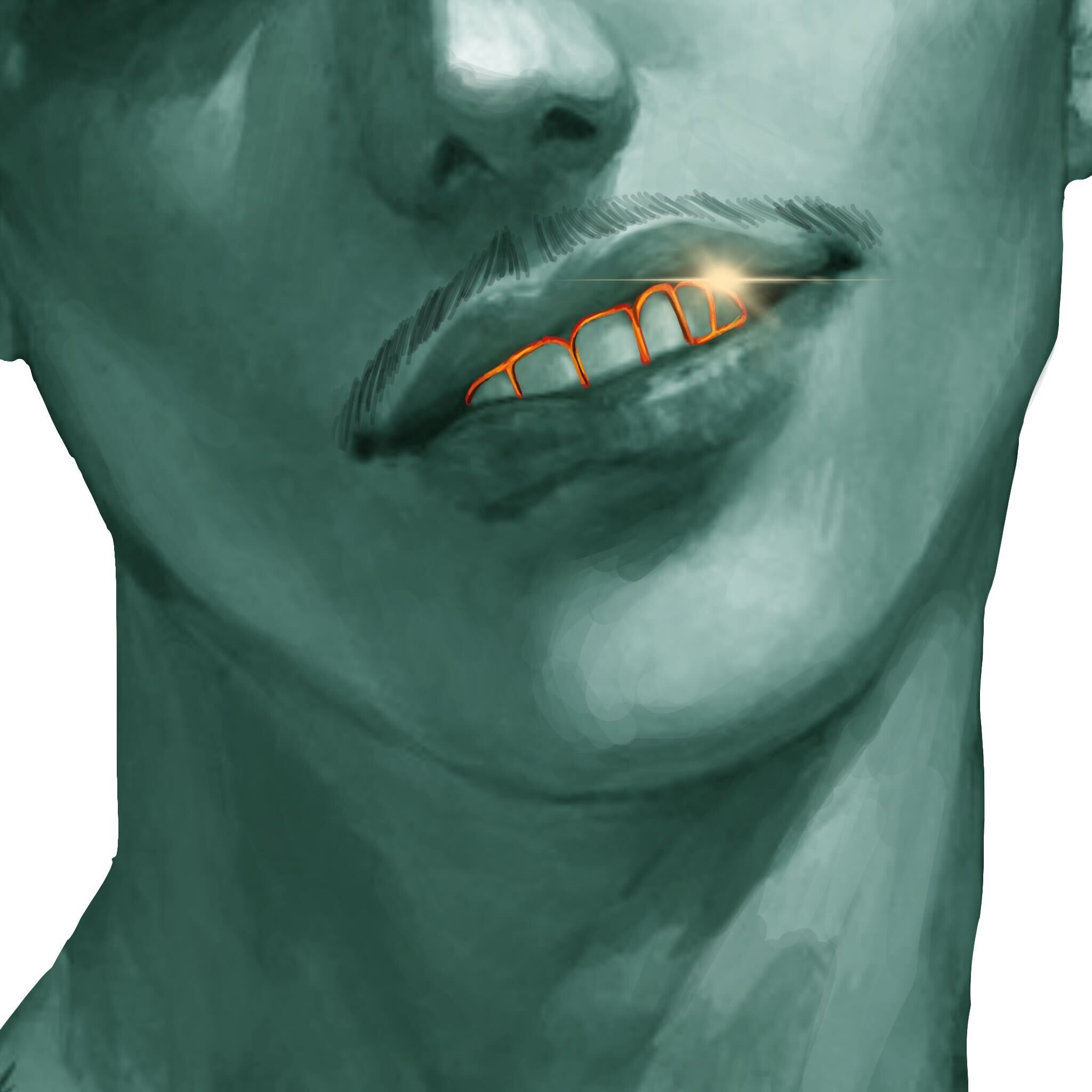How We Love Is Who We Are
By Joshua Rush
April 7, 2025

Graphic by Ariana Perales
“In the name of our God, I ask you to have mercy upon the people in our country. And we're scared now. There are gay, lesbian, and transgender children in Democratic, Republican, and independent families—some who fear for their lives. And the people, the people who pick our crops and clean our office buildings, who labor in poultry farms and meatpacking plants, who wash the dishes after we eat in restaurants, and work the night shifts in hospitals. They may not be citizens or have the proper documentation. But the vast majority of immigrants are not criminals. They pay taxes and are good neighbors. They are faithful members of our churches, mosques, synagogues, and temples.” — These words, spoken by Rev. Mariann Budde, are heard from the speakers above during Willy Chavarria’s new collection, Tarantula.
Born to an Irish-American mother and a Mexican-American father in Fresno, California, Chavarria saw discrimination and racism stemming from the couple’s interracial relationship. His parents were also activists for farm workers during the 1960s and 1970s.
“I grew up in a world far from fashion,” Chavarria told SSENSE. “Yet it’s shaped every creative choice I’ve made.”
Growing up in a small California town called Huron, which is made up mostly of Mexican immigrants, and eventually moving to a town in the San Joaquin Valley called Visalia, it is clear where the 2024 CFDA Menswear Designer of the Year draws his inspiration. Chavarria recalls looking at magazines as a child, but he didn’t realize he wanted to work in fashion until he found himself staying late in the office to work on sketches and spreadsheets while working part-time in Joe Boxer's shipping department. Chavarria has now been in the industry for two decades and has worked for Ralph Lauren, Calvin Klein, and American Eagle Outfitters. In 2015, Chavarria launched his namesake line.

Graphic by Ariana Perales
The openly-gay designer implements the message of empowerment and inclusivity throughout all of his collections. His most recent show, Tarantula, is a direct response to the new administration, one built on fear mongering and hateful rhetoric. The title Tarantula is drawn from a song by This Mortal Coil, while simultaneously being inspired by marginalized communities Chavarria draws inspiration from. Much like a tarantula, these communities are often painted in a bad light, but they still persist with resiliance. He described how the world around us is bleak and in order to keep his faith he tries to foster community through similar ideologies. The stories of Brown, Black and Queer communities have always been at the heart of his work.
Chavarria elevates staple Chicano pieces such as oversized Chinos, zoot suits, and flannels with premium materials including crushed velvet, washed silk, and Italian wool. He fell in love with the fashion of lower-income communities and with the way they express themselves. Additionally, the designer emphasizes broad shoulders and tight waists on various of the silhouettes. Each garment designed by the creative genius includes a non-binary touch to them so EVERYBODY can wear the pieces. The designer visualizes a world where diversity is a permanent part of culture.
“Femininity and masculinity still exist, and they don’t have to be toxic. We can love them, and we can include them and be accepting of one another,” Chavarria tells Bazaar.
Through his collaboration with the ACLU, the United Farm Workers Union, and the Human Rights Campaign (HRC), the designer hopes to bring “pro-love” to the mainstream.

Graphic by Ariana Perales
As the words by Rev. Mariann Budde are heard through the speakers in the American Cathedral Episcopal Church in Paris, Chavarria leads a united charge as his showcase ends wearing a new shirt from the HRC Tinder collaboration with the words, “How We Love Is Who We Are.”
While wearing Chavarria’s pieces, the models showcase strength, power and sexiness even though skin isn’t being shown. His designs balance strength and softness, creating a look that is bold and tender. At the same time, Chavarria intentionally seeks an aesthetic where women are perceived as both alluring and intimidating to straight males.
Chavarria street-cast for the first three days with the hopes of casting people who aren’t normally seen on the runways. He’s always believed that “sexiness” is almost never seen from the quote-on-quote “perfect” person. The lazy eye, bad skin, or facial asymmetry makes people unique. To Chavarria, there’s beauty in that.
In the behind the scenes video with Dazed models describe warmth and kindness from the designer and his clothing. Models are seen laughing and dancing while others describe how the team feels like a family. The designer closes the video by describing how unity inspires strength to resist oppression. By helping people feel supported and connected without judgment or fear we can create love. And How We Love Is Who We Are. ■
Other Stories in Fashion
© 2024 SPARK. All Rights Reserved.
